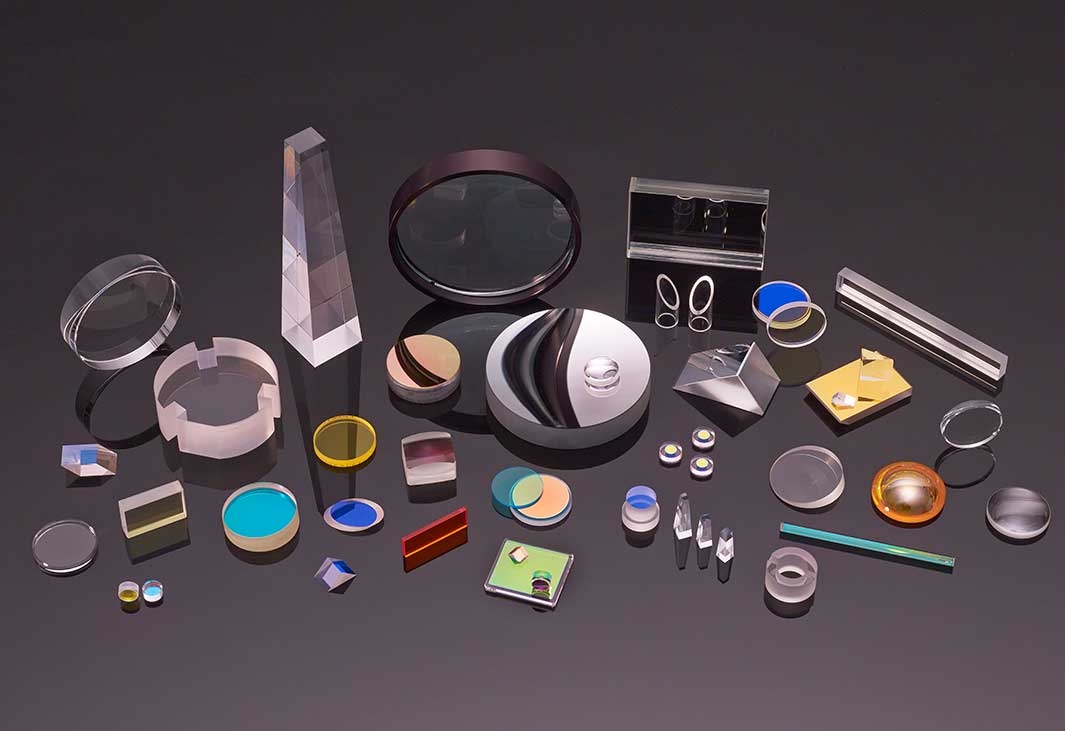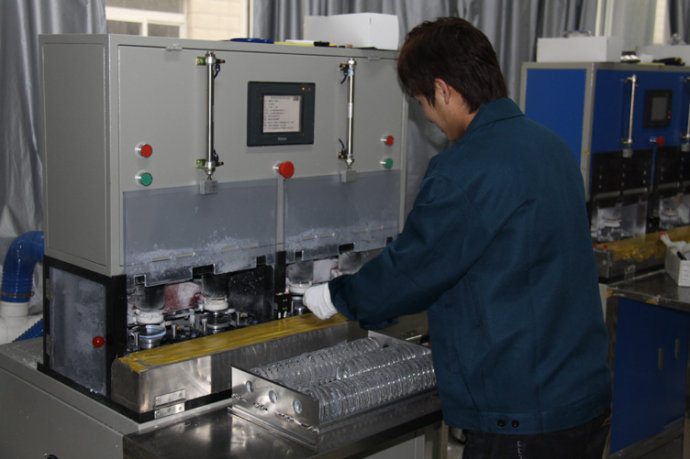
At present, cerium oxide (ce02) is the main polishing powder used for polishing glass lenses, and the proportion of polishing solution varies according to the polishing period of the lens. Generally, in the initial stage of polishing, a higher concentration of polishing solution is used when combining with the polishing mold. After the lens surface is bright, a thinner concentration of polishing solution is used to avoid orange peel on the mirror surface (atomization on the lens surface).
The motion mechanism used for polishing and grinding is the same. Except that the polishing tools are different from the working fluid, the environmental conditions required for polishing are also more stringent than those for grinding. Precautions for general polishing are as follows:
1. Before polishing, it must be determined whether there are scratches or punctures left on the lens surface after grinding.
2. Whether the size and material of polishing tools are appropriate.
3. Pay attention to the condition and accuracy inspection of the lens surface at any time during polishing. For the inspection of lens surface defects, because the inspection process is judged by personal vision and methods, the inspector should have a deep understanding of the specifications of scratches and sand holes, and often compare the standard samples of scratches and sand holes to ensure the correctness of the inspection.
1. Polishing powder
1.1 requirements for polishing powder
a. The particle size shall be uniform, and the hardness shall be slightly harder than that of the polished material;
b. The polishing powder shall be pure and free from impurities that may cause scratches;
C. It shall have certain character, form and defects, and have appropriate self sharpening:
d. It shall have good dispersibility and adsorption;
e. Good chemical stability and no corrosion to workpiece.
1.2 types and properties of polishing powder
Common polishing powders include cerium oxide (ce02) and iron oxide (fe03).
a. Ceria polishing powder particles are polygonal with obvious edges and corners, with an average diameter of about 2 microns, Mohs hardness of 7 ~ 8 and specific gravity of about 7.3. Due to the different manufacturing process and cerium oxide content, cerium oxide polishing powder has white (content of more than 98%), light yellow, brown yellow, etc.
b. Iron oxide polishing powder is commonly known as red powder. The particles are spherical, the particle size is about 0.5 ~ 1 micron, the Mohs hardness is 4 ~ 7, and the specific gravity is about 5.2. Colors range from yellow red to crimson.
To sum up, ceria has higher polishing efficiency than red powder, but red powder is better for parts with high surface finish requirements.
2. Polishing mold layer (underlay) materials the commonly used polishing mold layer materials include polishing glue and fiber materials.
2.1 polishing glue
Polishing glue, also known as polishing asphalt, is prepared from rosin and asphalt in different proportions. It is used for precision polishing of optical parts.
2.2 fiber materials
In the polishing of optical workpieces, if the requirements for the surface shape accuracy (aperture) of the polished surface are not high, wool, felt and other fiber materials are often used as the materials of the polishing die layer.
3. Common test instruments
Some quality indexes of optical parts, such as the radius of curvature of the lens and the angle of the prism, need to be measured by special testing instruments. The commonly used instruments are: optical comparison side angle instrument, laser plane interferometer, spherical diameter instrument and knife edge instrument, etc.

4. Polishing
Add polishing fluid properly during polishing. There is too little polishing fluid, the particles of polishing powder participating in the action are reduced, and the polishing efficiency is reduced. There is too much polishing liquid. Some polishing powder particles do not participate in the work. At the same time, they also bring a lot of liquid, which reduces the temperature of the glass edge and affects the polishing efficiency. The concentration of polishing liquid should also be appropriate. If the concentration is too low, that is, there is too much water, the polishing powder particles involved in the work are reduced and the glass surface temperature is reduced, so the polishing efficiency is reduced. The concentration is too high, that is, there are few water bands, which affects the polishing pressure. The polishing powder can not walk quickly and evenly, resulting in unequal pressure in each part, resulting in local grinding, which has an impact on the quality of polished aperture (stripe). Moreover, the pressure per unit area is reduced, the efficiency is reduced, and the debris generated in the polishing process can not be removed smoothly, making the workpiece surface rough.
Generally, the polishing liquid is slightly thicker at the beginning of polishing. When it is about to be completed, the polishing liquid is lighter and added less times, which is conducive to improving the polishing efficiency and finish. In addition, it is generally believed that the acidity (pH value) of the polishing solution should be controlled between 6 and 8, otherwise the glass surface will be corroded and affect the surface finish.
When checking the aperture (stripe) during polishing, if it is unqualified, it can be modified by adjusting the speed and pressure of the polishing machine, the relative speed, relative displacement, swing speed and shy polishing die layer between the workpiece and the die (the footwall of the polishing machine).
In conclusion, in order to control and stabilize the polishing conditions, the workplace should maintain a relatively stable temperature (about 25 ° C) and humidity (relative humidity is 60 ~ 70%).



